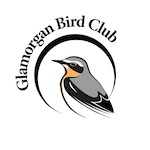A brief history of reporting avifauna in Glamorgan
All locally published accounts of recording birds in Glamorgan originally appeared in the Ornithological Notes in the Transactions of the Cardiff Naturalists' Society (CNS) founded in 1867. These were published annually by various authors although, after the Great War, these were jointly authored by H. Morrey Salmon and Geoffrey Ingram. Periodically, there were also overviews, which were titled The Birds of Glamorgan. The first of these was published in 1900, followed by another in the Transactions in 1925 and a full account in the Glamorgan County History,Vol.1, Natural History, in 1936.
Glamorgan's first Annual Bird Report was published in 1962 when both CNS and Gower Ornithological Society (GOS) jointly published a single annual publication to replace the Ornithological Notes. However, they still published the more unusual bird records in both journals. This was seen as a step forward in bird recording, and came into line with many other counties that already had annual bird reports. To inform this new annual report, a joint records committee was formed and chaired by Morrey Salmon. This report was also the first stepping-stone in gathering the information to write The Birds of Glamorgan, the first purposely written book to contain an accurate account of the birds in the county, which was published to celebrate the centenary of the CNS in 1967. A short Supplement to this book was produced in 1974.
Annual Bird Reports covering the whole of Glamorgan continued up until 1984. Thereafter, two separate bird reports were produced, with GOS publishing its own report for the West Glamorgan recording area and CNS publishing a report for the Mid and South Glamorgan recording areas. As the latter publication was still produced by the CNS it was decided to keep the original numbering system started in 1962.
The Mid and South Glamorgan Bird Report remained until 1996 when the counties were reorganized and split into six new Unitary Authorities - one of which, Caerphilly, covered parts of both of the old counties of Glamorgan and Gwent because it straddled the River Rhymney. A new name had to be found for the recording area and so it was that Eastern Glamorgan was born.
A new Birds of Glamorgan (Hurford and Lansdown) was published in 1995. It was a great leap forward from the 1962 edition which had no photographs, line drawings or distribution maps, and some species were referenced without a written summary. Fifty years on and with the computer age, modern databases and digital photography, the 50th edition of the annual report for 2011 had all that technology could supply. What would pioneers like Morrey Salmon, Geoffrey Ingram et al say? Surely they would all be very pleased that their ideas of recording are still being adhered to and that bird recording in Glamorgan is going from strength to strength.
Distribution map species lists
Breeding change maps
Species richness maps
© 2014 Glamorgan Bird Club
